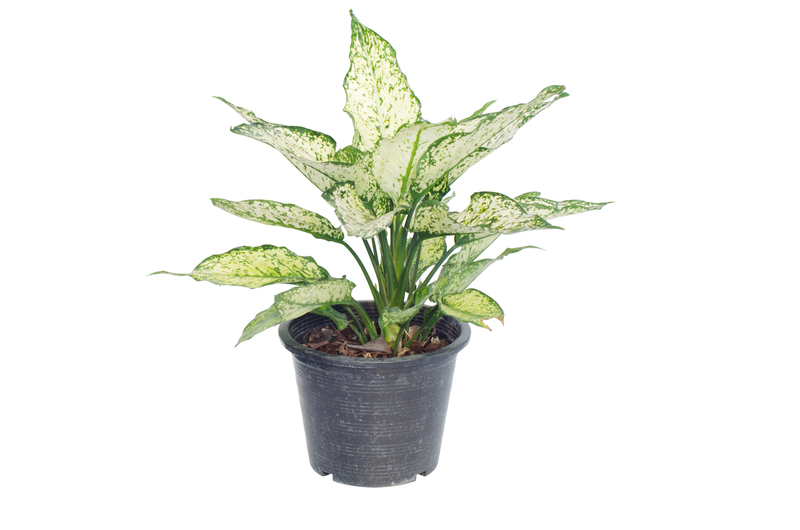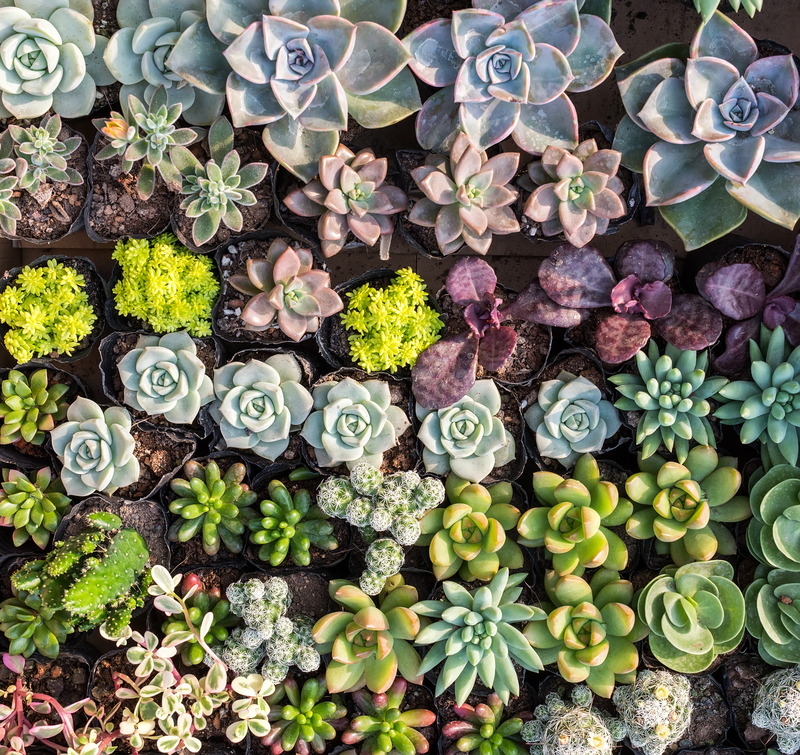Cultivating Rich Soil Nutrition from Organic Waste
Posted on 19/09/2025
Cultivating Rich Soil Nutrition from Organic Waste: A Comprehensive Guide
In today's eco-conscious world, harnessing organic waste to enrich garden soil is rapidly gaining traction among gardeners, farmers, and environment enthusiasts. Cultivating rich soil nutrition from organic waste not only reduces landfill contributions but also rejuvenates the earth, enabling crops and plants to thrive. This comprehensive guide delves into the science, methods, and benefits of transforming your everyday kitchen scraps, garden clippings, and other organics into nutrient-dense soil for abundant harvests and healthy ecosystems.

Understanding the Importance of Soil Nutrition
Soil isn't just dirt; it's a living, breathing foundation supporting an intricate web of life. Healthy soil nutrition is vital for robust plant growth, resistance to pests, improved water retention, and enhanced crop yields. Traditionally, chemical fertilizers have been used to boost soil health. However, such solutions often degrade soil structure over time, introduce harmful toxins, and disrupt the natural balance of microorganisms.
In contrast, leveraging organic matter for soil enrichment fosters a balanced and thriving soil ecosystem. Numerous studies confirm that organic amendments like compost, manure, and mulched garden waste deliver a rich spectrum of macro and micronutrients, revitalizing the earth without negative side effects.
The Need for Organic Waste Recycling
- Environmental Impact: Organic waste in landfills emits methane, a potent greenhouse gas. Composting and recycling mitigate this hazard.
- Resource Optimization: Kitchen and yard waste become valuable resources instead of pollutants.
- Soil Regeneration: Recycled materials feed soil microbes, which in turn boost plant health and productivity.
Sources of Organic Waste for Soil Nutrition
Understanding what constitutes organic waste suitable for soil enrichment is the first step in cultivating fertile soil. Here are the main types:
- Kitchen Scraps: Vegetable peels, coffee grounds, eggshells, fruit remnants, and tea bags.
- Yard and Garden Rightovers: Grass clippings, fallen leaves, small branches, and pruned plants.
- Agricultural Waste: Crop leftovers, manure from herbivorous animals, and plant stubble.
- Other Biodegradable Materials: Newspaper (non-glossy), cardboard, natural fibers, and sawdust (from untreated wood).
What to Avoid in Organic Soil Amendments
Not every organic or biodegradable item is safe for soil nutrition. Avoid these materials to prevent contaminating your soil:
- Pet waste (may contain harmful pathogens)
- Meat, dairy, oily foods (can attract pests and slow decomposition)
- Treated wood or glossy paper (contains chemicals harmful to plants)
- Diseased plant material (can spread plant illnesses)
Composting: The Foundation for Cultivating Nutrient-Rich Soil
Turning organic waste into compost is one of the most effective ways to produce rich soil nutrition. Composting speeds up the natural decomposition process, resulting in humus--a dark, crumbly substance high in nutrients, beneficial microorganisms, and organic matter.
The Science of Composting
Composting relies on a delicate balance of carbon-rich ('
Steps for Effective Composting
- Choose a Location: Select a shaded, well-drained spot for your compost pile or bin.
- Layer Materials: Start with a layer of coarse browns for aeration, then alternate layers of greens and browns.
- Monitor Moisture: Keep the pile moist--like a wrung-out sponge--not soggy or dry.
- Turn the Pile: Regular aeration accelerates decomposition and prevents unpleasant odors.
- Wait and Harvest: Depending on conditions, compost is ready in 2-6 months when it's dark, crumbly, and earthy-smelling.
Tip: Speed up composting by chopping waste into small pieces and maintaining proper moisture and aeration.
Vermicomposting: Raising Soil Fertility with Worms
Vermicomposting employs red wiggler worms (Eisenia fetida) to process organic waste into worm castings, one of the most potent natural fertilizers available. The castings not only enrich soil nutrition but also help plants resist diseases.
- Why Vermicompost? Contains higher concentrations of nutrients and beneficial microbes than traditional compost.
- How to Start: Use a dedicated worm bin, layer bedding (coconut coir, shredded paper), add food scraps, and introduce worms.
- Harvesting Castings: In about 2-3 months, separate finished castings from worms and use as a top dressing or in planting holes.
Other Organic Soil Amendments
While compost and vermicompost are the cornerstones of organic waste-based soil nutrition, several other amendments boost soil quality:
- Composted Manure: Animal manure (from herbivores) aged for several months is nutrient-rich and improves soil structure.
- Green Manures: Cover crops (e.g., clover, alfalfa) grown and incorporated into soil add organic matter and fix nitrogen.
- Mulches: Applying organic mulch (wood chips, straw, leaves) protects soil, conserves moisture, and decomposes into humus.
- Biochar: Charred organic matter that enhances soil nutrient retention, improves aeration, and sequesters carbon.
How Organic Waste Improves Soil Structure and Nutrition
Utilizing organic waste for soil nutrition delivers a host of benefits:
- Boosts Microbial Life: Organic matter is food for beneficial bacteria, fungi, and earthworms that support plant growth.
- Enhances Soil Texture: Compost loosens dense clay soils and helps sandy soils retain water and nutrients.
- Increases Nutrient Content: Rich in nitrogen, phosphorus, potassium, calcium, magnesium, and trace minerals essential for healthy plants.
- Improves Soil pH: Compost buffers pH extremes, making soils more suitable for a wider range of plants.
- Suppresses Diseases and Pests: Healthy soils lead to healthier plants better equipped to resist diseases and insect infestations.
Common Nutrients Derived from Organic Amendments
- Nitrogen (N): Aids leafy growth and lush foliage development.
- Phosphorus (P): Supports root growth and flower/fruit production.
- Potassium (K): Strengthens disease resistance, assists water movement, and improves yields.
- Calcium, Magnesium, Sulfur: Assist in cell structure and photosynthesis.
- Micronutrients: Iron, manganese, boron, zinc, copper--essential for overall plant vitality.
Best Practices for Applying Organic Amendments
To maximize the benefits of your organically enriched soil:
- Apply Mature Compost: Ensure compost is fully decomposed to prevent robbing plants of nitrogen or introducing pathogens.
- Incorporate at the Right Time: Add compost and manure in fall or a few weeks before planting to let them integrate with the soil.
- Use Mulch Strategically: Mulch around plants to conserve moisture, suppress weeds, and gradually feed the soil.
- Test Soil Regularly: Soil tests reveal nutrient levels and help tailor future amendments for balanced nutrition.
- Rotate Amendments: Use a variety--compost, manure, green manure--to supply a full spectrum of nutrients and prevent imbalances.
DIY Guide: Creating Your Own Organic Soil Nutrition System
Step 1: Collect and Separate Organic Waste
- Dedicate bins for kitchen scraps and garden debris.
- Keep 'green' and 'brown' materials accessible for easy composting.
- Educate housemates and family on what can/cannot be composted for success.
Step 2: Start Composting or Vermicomposting
- Build or buy a compost or worm bin suitable for your space.
- Regularly turn and monitor moisture in compost piles.
- If inside, maintain vermicompost bins in a dark, ventilated area; keep them moist but not soggy.
Step 3: Apply Finished Compost and Amendments
- Top dress existing beds or incorporate into new planting holes.
- Use as mulch around perennials, shrubs, and fruit trees.
- Mix into potting soil for container gardening.
Step 4: Monitor, Maintain, and Improve
- Observe plant growth and soil texture for improvement guideliness.
- Adjust compost recipe based on observed needs and soil test results.
- Keep adding new waste to your system--soil health is a continuous process.
Benefits Beyond the Garden: Environmental and Economic Advantages
Beyond boosting soil nutrition with organic waste, these practices offer broad advantages:
- Reduces Landfill Waste: Diverts significant household and community waste from landfills.
- Lowers Carbon Footprint: Decreases methane emissions and avoids synthetic fertilizer production's pollution.
- Saves Money: Reduces or eliminates the need for store-bought fertilizers and soil conditioners.
- Promotes Sustainable Agriculture: Supports closed-loop systems and resilient local food networks.

Frequently Asked Questions About Organic Waste Soil Nutrition
Q: How long does it take for organic waste to become usable soil nutrition?
A: Compost can mature in as few as 2-3 months under optimal conditions; vermicompost may be ready in 2 months. Cold piles or poorly managed compost may take 6-12 months.
Q: Is it safe to use compost from kitchen waste on edible crops?
A: Yes, as long as compost is fully decomposed and doesn't include meat, dairy, or pet waste. Finished compost is safe, enhances soil fertility, and poses no risk to crops.
Q: Can I compost during winter?
A: Yes, composting continues slowly in cold temperatures. Insulate piles or bins to retain heat and maintain decomposition. Vermicompost bins placed indoors work year-round.
Conclusion: Start Cultivating Rich Soil Nutrition Today
By integrating organic waste recycling into your gardening routine, you'll cultivate rich soil nutrition, minimize waste, and contribute to a healthier, more sustainable planet. Start with simple composting or worm bins, grow your knowledge, and share your harvest with others. Your soil--and future crops--will thank you!
Begin today--your garden's healthiest harvest awaits, powered by the nutrients locked in your organic waste!

